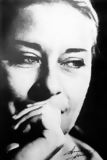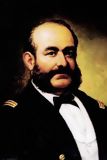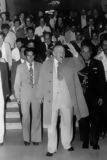
The AIgorythm project

Playwright and actor

Novelist

Writer and poet

Volleyball player

Italian-Peruvian naturalist and geographer

Singer and percussionist

Last Inca emperor

Politician, former prime Minister

Journalist and TV host

Poet

Inca warrior

Actor and comedian

Biophysicist

Poet

Doctor and researcher

Businessman, Interbank group

Journalist and writer

Poet and writer

Singer and songwriter

Writer

Film director, Berlin Golden Bear winner

Football player

Writer and journalist

Doctor and scientist

Photograph

Chess player

Industrialist

Former general

Specialist in public health

Actress and singer

Afro-Peruvian music singer

Mathematician and engineer

Indigenous chronicler

Neurologist and anthropologist

Painter

Football player

National hero, military leader

Intellectual and reformer

Chef and entrepreneur

Fashion designer

Singer-songwriter

TV presenter

Marathon runner

Indigenous Peruvian chronicler

Theologian

Former national team captain

Economist and former health minister

Inca princess

Writer and television host

Folk musician

Poet and guerrilla

Former UN secretary-general

Chef, known for fusion cuisine

Football player

Peruvian aviation pioneer

Poet and artist

Marxist philosopher and writer

Industrialist and businessman

Novelist and ethnologist

Painter and muralist

Opera tenor

Fashion designer

Cardinal of Lima

Peruvian tennis player

Football coach

Leader of the indigenous rebellion

Military hero

Latin singer

War of the Pacific hero

The youngest mother in history

Politician

Creole music singer

Tennis player

Musician

Writer and politician

Politician and founder of the Christian Democratic Party

Founder of Sodalitium Christianae Vitae

Archaeologist and anthropologist

Military leader and politician

Television host

Actress and singer

Contemporary sculptor

Women’s rights activist

Beauty queen

Astrophysicist

Heroine of independence

Mathematician and archaeologist

Historian and anthropologist

Military figure and historical figure

Fashion photographer

Writer, Nobel Prize in Literature, Politician

Revolutionary leader

Environmental activist

Leader of the indigenous rebellion

Musician from Gaia band

War hero

Military leader and politician

Chef, known for Nikkei cuisine

Volleyball coach and former player

Environmental activist

Television personality

Writer

Football player

Epidemiologist and former health Minister

Inventor and aerospace pioneer

Soldier and inventor

Rock singer

Chef and co-owner of Central restaurant

Painter

Football player

TV presenter and actress

Actor

Writer and historian

Journalist and lawyer

Archaeologist, founder of Caral site

Monk and Saint

Saint, patron of Latin America

Physicist and engineer

World champion surfer

Actress

Oncologist

Singer, Latin Grammy winner

Former mayor of Lima

Singer

Actress

Former football player

Painter

Former football player

Painter

Inca leader

Archbishop, saint

Leader of the indigenous rebellion

Revolutionary indigenous leader

Diplomat and intellectual

Sculptor and painter

Political leader, founder of APRA

Lawyer and Former prime minister

Chef of Central restaurant

Former head of secret services

Popular singer

Fashion designer

Exotic music singer
Teodoro Núñez Ureta, born on April 13, 1912, in Arequipa, and passed away on March 7, 1988, in Lima, is one of the most significant figures in 20th-century Peruvian art. A painter and muralist, he is known for his commitment to social art and for his powerful depictions of Peruvian reality, particularly the struggles of indigenous and working-class populations. Through his work, Núñez Ureta masterfully combined refined pictorial technique with a deep social message, making him a pioneer of socially engaged art in Peru.
Teodoro Núñez Ureta was born into a modest family in Arequipa, a city in southern Peru, where he spent much of his childhood. From an early age, he showed a great interest in drawing and painting, and despite his family’s limited resources, he managed to enroll at the National School of Fine Arts in Lima. It was there that he began developing his distinctive style, influenced by social realism and Peruvian cultural traditions.
During his studies, Núñez Ureta was deeply influenced by the work of great Mexican muralists such as Diego Rivera and David Alfaro Siqueiros, who promoted politically engaged art in the service of social struggles. These influences shaped his own vision of art as a tool for social transformation and a means of educating and raising awareness among the Peruvian public.
Teodoro Núñez Ureta quickly became one of the leading representatives of social art in Peru. His works, particularly his murals, reflect his deep concern for the living conditions of the working class, laborers, and indigenous populations. He often depicted scenes from the daily lives of these groups while denouncing the social and economic injustices they faced.
In his murals, Núñez Ureta used vibrant color palettes and dynamic compositions to capture the dignity and resilience of Peruvian workers and peasants. His realist style is imbued with humanity and compassion, and his work is often compared to that of the Mexican muralists, though he developed a unique artistic voice that reflected Peru’s specific realities.
Among Teodoro Núñez Ureta’s most important works are numerous murals that adorn public buildings throughout Peru. One of his most iconic works is the mural « Los Andes », located at the National University of San Agustín in Arequipa, which depicts the struggles and hopes of Andean populations. Through this work, Núñez Ureta highlights the relationship between indigenous peoples and their land, as well as the challenges they face in modernity.
Another major mural, « El hombre y el trabajo », can be found at the National University of Engineering in Lima. In this piece, Núñez Ureta pays tribute to manual laborers, heroically portraying the efforts and contributions of those who build and shape the nation. His work celebrates collective strength while emphasizing the need for social justice and solidarity.
Teodoro Núñez Ureta’s style combines realism and symbolism, allowing him to create works that are both accessible and deeply meaningful. His characters, often workers and peasants, are depicted with great attention to detail and physical reality, yet they also embody broader concepts such as the struggle for freedom, justice, and human dignity.
His monumental compositions are designed to be viewed by a broad audience, in line with his commitment to democratic art. He believed that art should be accessible to all, not reserved for a cultural elite. This is why he chose murals as his preferred medium, as they allow him to reach a wider audience in public spaces accessible to everyone.
Teodoro Núñez Ureta left a profound mark on Peruvian art through his social and political commitment. As an artist, he used his talent to denounce inequalities and injustices, while celebrating the resilience and dignity of Peru’s working-class populations. His work continues to inspire many artists and activists who seek to use art as a means of social change.
In addition to his murals, Núñez Ureta left behind a significant body of drawings and paintings, which are now preserved in public and private collections. His work has been widely exhibited in Peru and abroad, and he is recognized as one of the great masters of 20th-century Latin American art.
Teodoro Núñez Ureta is undoubtedly one of Peru’s most influential artists, not only for his artistic talent but also for his commitment to social justice. Through his monumental murals and socially engaged works, he helped shape Peru’s social consciousness while leaving a lasting artistic legacy. Today, his works continue to resonate, reminding us of the importance of art in the struggle for a more just and humane world.